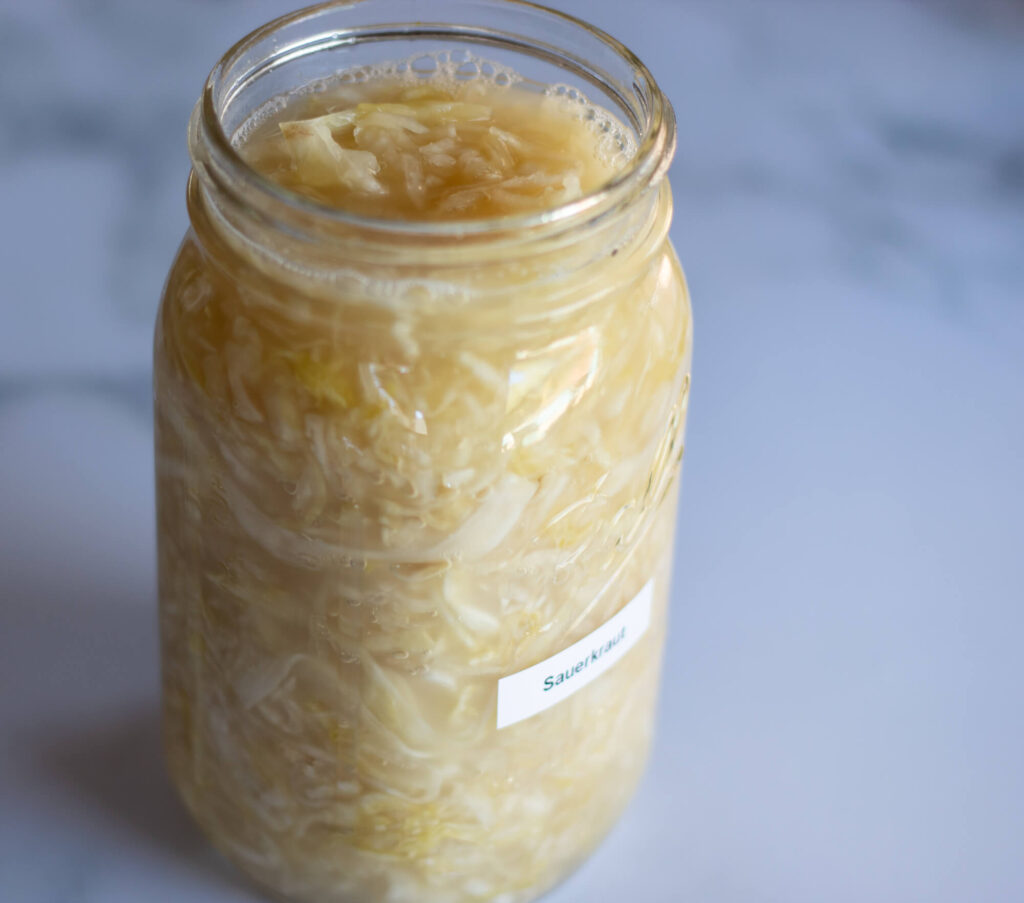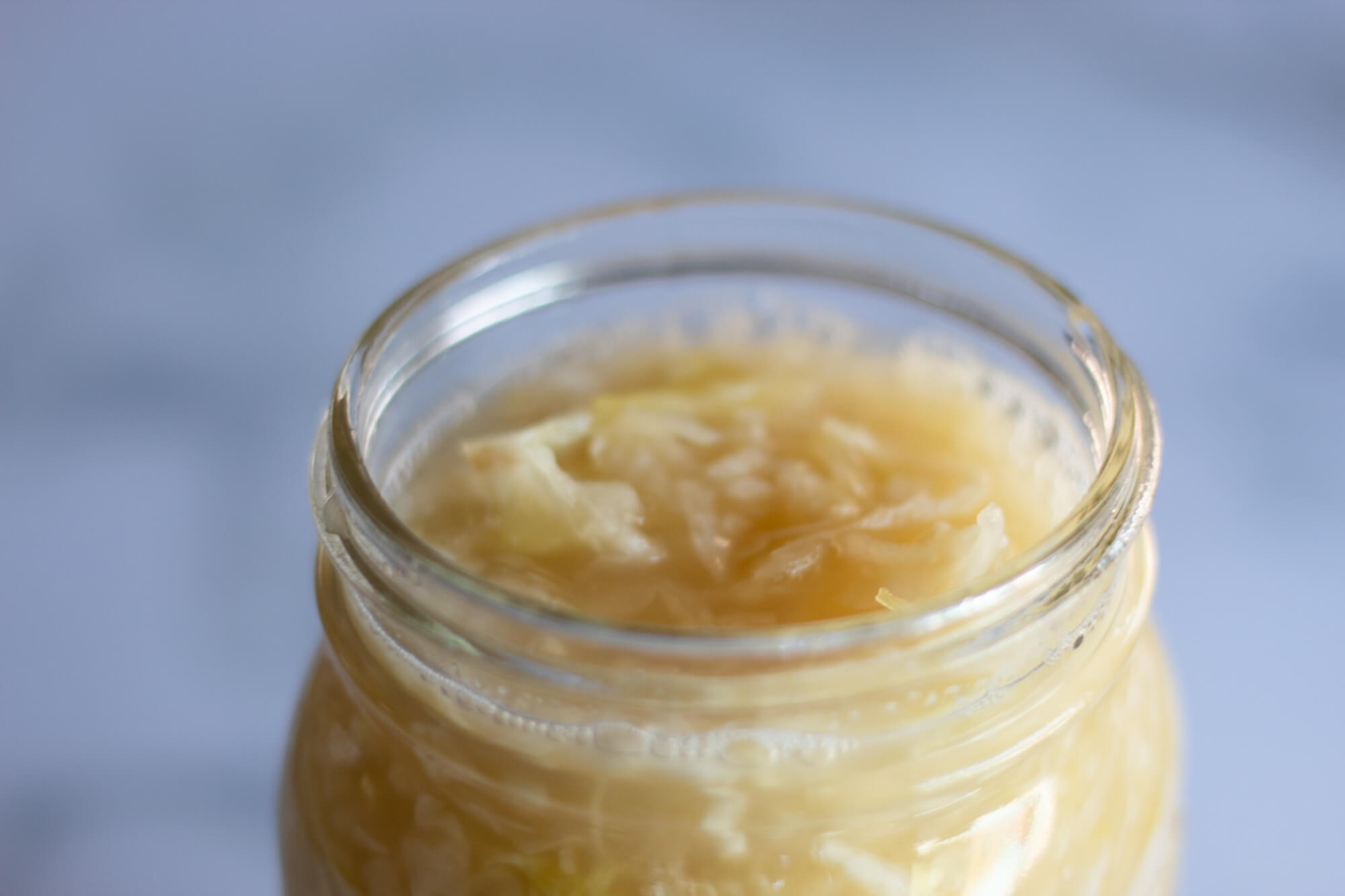It’s so simple to make lactic fermented foods as long as you follow a couple of rules. The end result is better than anything you can buy, less expensive and is very satisfying to know that with nothing more than vegetables and salt you produced this magical food. In this post I will apply the method to cabbage to produce sour cabbage, aka sauerkraut. The same process, more or less, can be used to pickle/ferment many other foods (beets, parsnips, beans, cucumber pickles…)
Impatient? Skip to the recipe.

To make lactic fermented vegetables you need three things:
- Vegetable (or fruit)
- Salt
- Lactic Acid Bacteria (LAB)
You can buy the first two. The bacteria? It’s everywhere arounds you. All you have to do is make the food-salt combo a nice hospitable environment for it and less attractive to other less useful micro organisms.
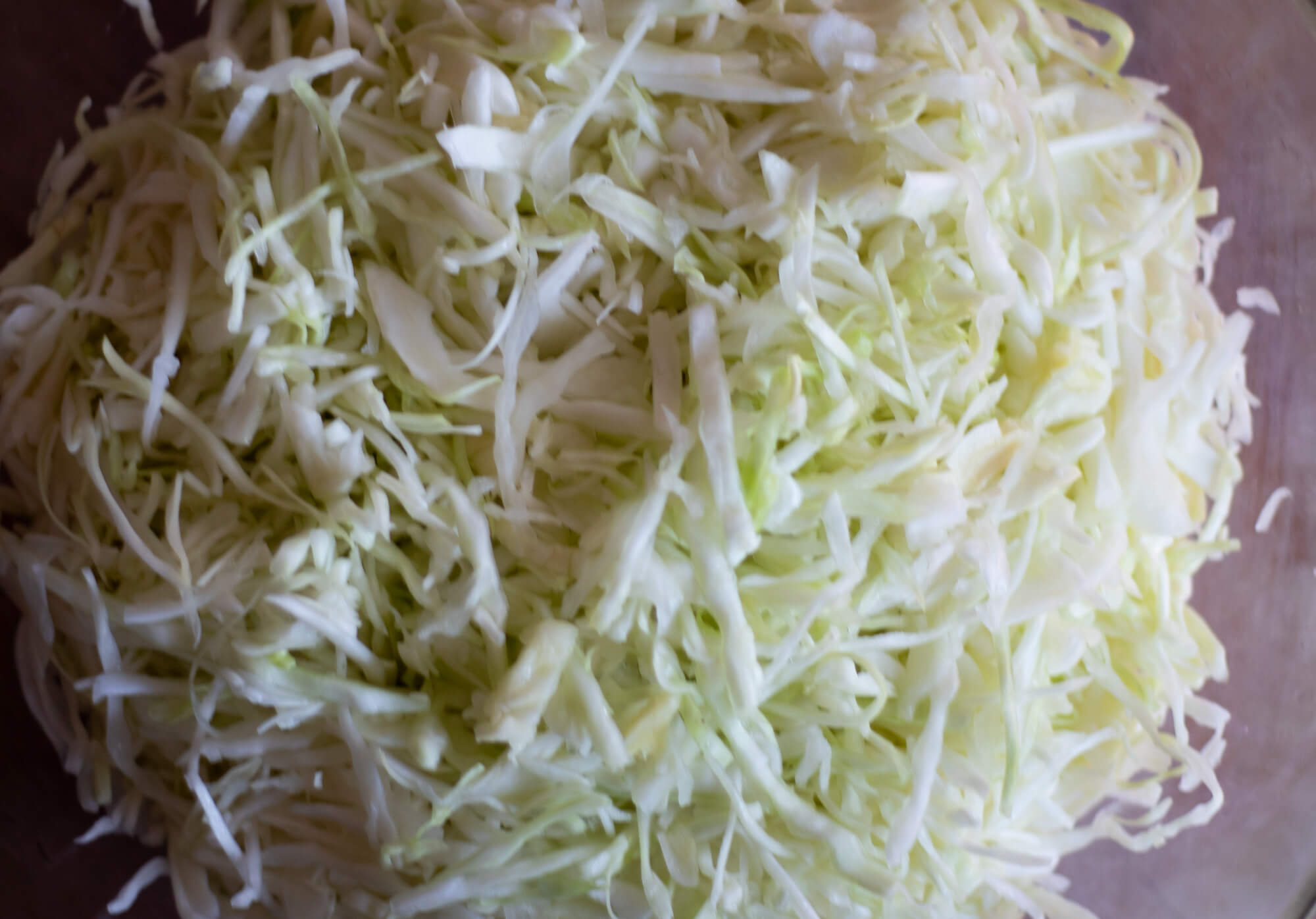
Salt is how we do this. The golden almost-always-true percentage of salt to vegetables is 2%. It’s enough to make the end product tasty, it allows the “good” bacteria to do it’s thing (ferment the vegetable and produce acid) and it prevents the nasty “bad” (the non-LAB bacteria might not make you sick, but it will not make the end product taste good, so we don’t want it) from joining the party and growing.

Other than salt, we need to let the stuff sit and ferment from a few days to a few weeks and we need to keep oxygen away from direct contact with the vegetables. There are several ways to do this, and I will try to highlight others in future posts. The simplest method is to weigh the cut up or shredded vegetables down so that is stays submerged under the liquid at all times. You can buy pickling jar weights that I’ve mentioned before in posts like this one and this one (Search for “Fermentation Glass Weights for Wide Mouth Mason Jars”) or use bags full of water and salt or a heavy ceramic plate on the surface, really anything that will not rust and will keep the stuff submerged.
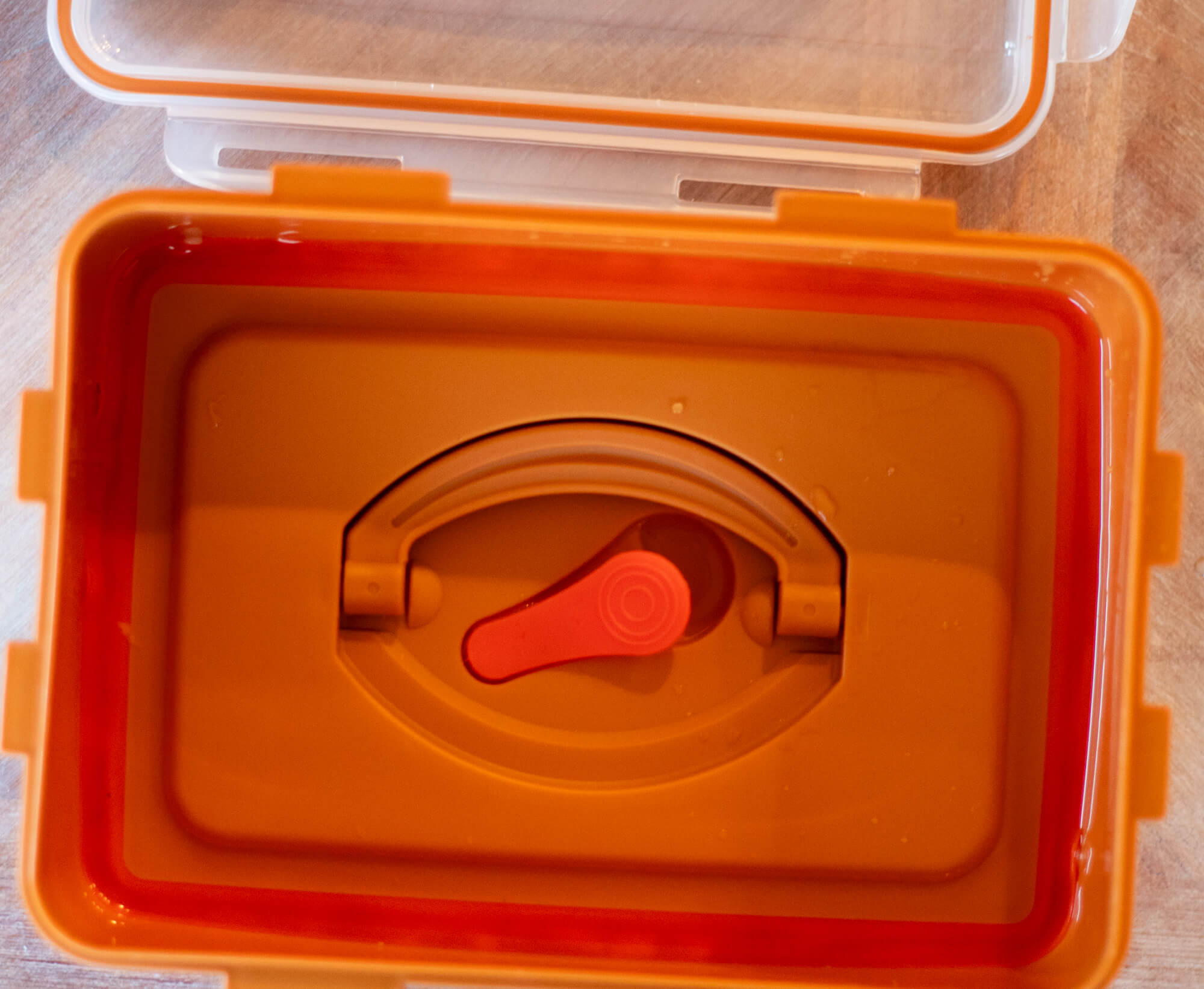
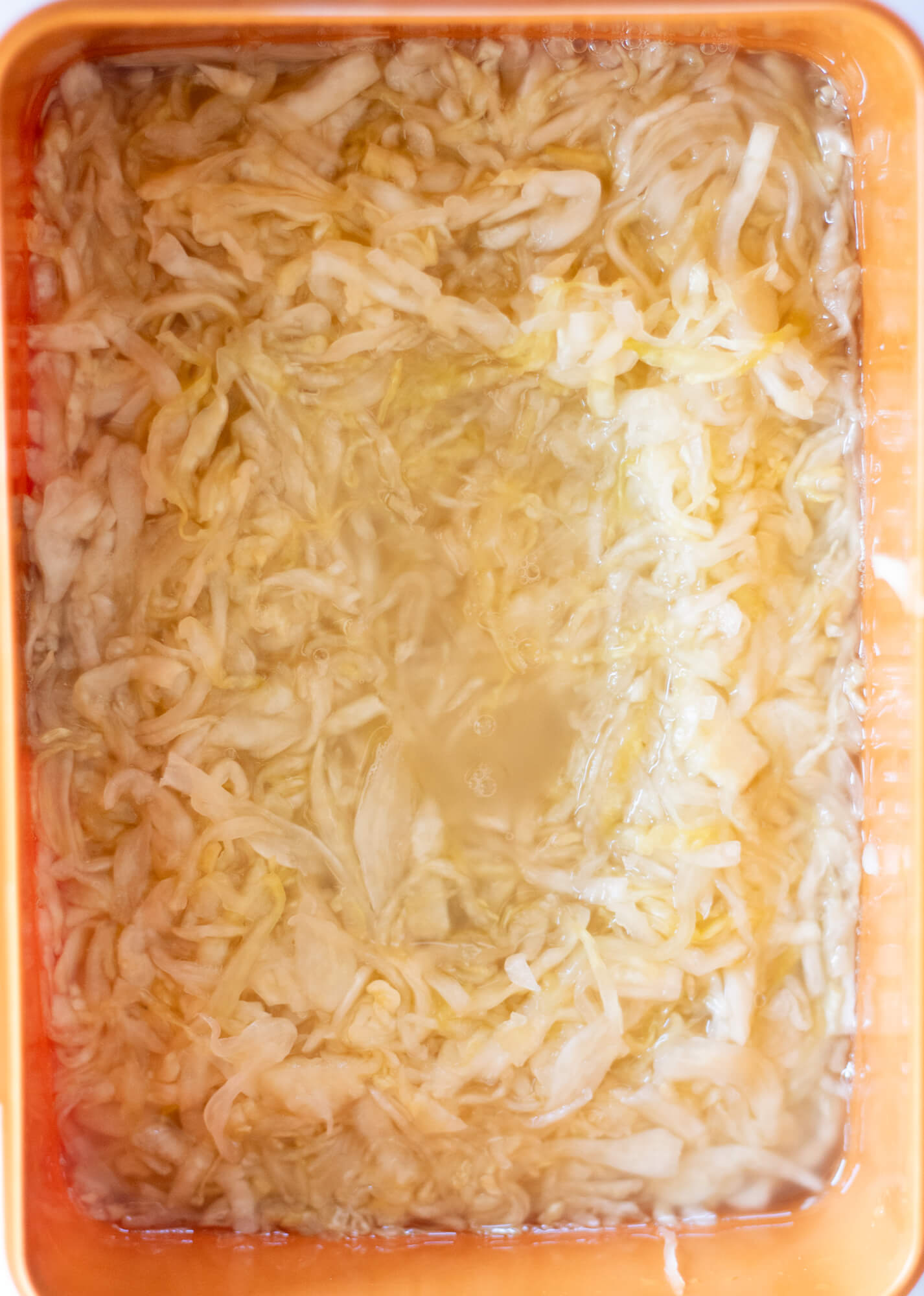
Here I am using a contraption that I picked up from a Korean grocery store that is sold for making Kimchi (another LAB dependent product). The vegetables and salt go in, the first part of the lid is pressed directly on the surface taking the air out and forcing the liquid to rise, and the last lid just covers everything and helps with not making your kitchen smell like cabbage. It’s a very good tool for these projects and works great for pickling cucumbers in brine too, but that’s another post.
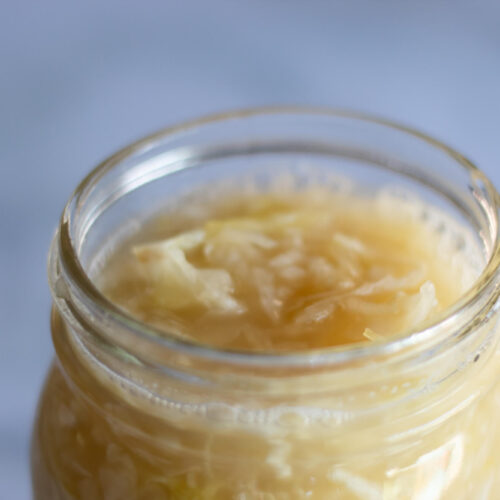
Sauerkraut
Ingredients
- 1000 gr Cabbage finely sliced or shredded
- 20 gr Salt 2% of the cabbage weight, adjust if you have more or less cabbage
Instructions
- In a bowl, mix the salt and cabbage and rub everything together for a few minutes. You can be rough here, you want to get the cabbage to start breaking down. The salt will start drawing liquid out of the cabbage as you are doing that.
- Let the mixture sit for an hour or two and by now there will be more liquid that came out of the cabbage and it would have wilted and become pliable.
- Pack the vegetables and all the liquid that came out in a jar or another fermentation container. Pack everything very tightly so that the liquid covers the cabbage. Add weights on top to make sure none of the cabbage is sticking out and exposed to air.
- NOTE: I've never had a problem with the cabbage not producing enough liquid to cover once the vegetables are weighed down. If you do have a problem with not having enough liquid add a little brine (water with 2% salt by weight dissolved in it) to ensure the cabbage is covered.
- Let the mixture ferment for at least one week. I found that for me, two weeks is about right with good texture and sourness level. Start tasting a bit of it one week into the fermentation time and see how you like it since this could vary depending on the temperature and environment. During the fermentation time make sure the weights stay on top and the cabbage is covered. If you notice a little mold on the surface, just skim it off.
- When it is ready, place it in a jar an store in the fridge. It can sit there for several months. I've never had it go "bad" but it rarely lasts more than a month or two before it's gone.
